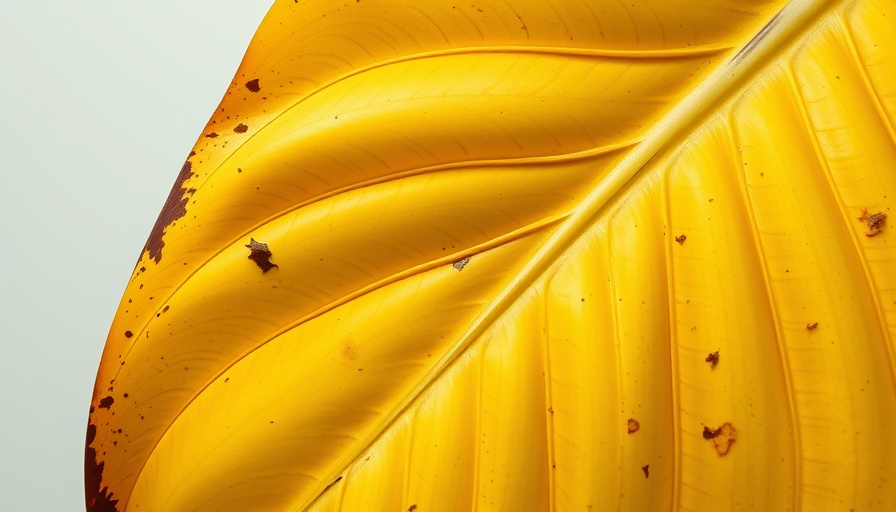
Understanding Your Monstera: The Basics
Monstera deliciosa, commonly known as the Monstera plant, is beloved by indoor gardeners and plant enthusiasts alike. This tropical beauty hails from the lush rainforests of Central America, where its unique, glossy leaves thrive. As a symbol of indoor greenery, the Monstera's stunning fenestrated foliage—it develops splits and holes as it matures—adds a statement piece to any home. However, despite its hardiness, it requires attentive care and can show signs of distress that are crucial to recognize.
Recognizing Signs of a Sick Monstera
As owners of this elegant plant may find themselves wondering, "Is my monstera sick?" it’s essential to familiarize yourself with its health cues. Experienced horticulturists like Megan Brame emphasize the significance of regular monitoring. Yellowing leaves are often the first indicator that your plant needs attention. “When you see yellowing or drooping leaves, it’s time to investigate,” Brame advises. This could progress to brown, crispy edges if ignored. Specific signs to watch for include:
- Leaf Curling: This can indicate that your plant is not receiving enough moisture or is suffering from pest issues.
- Absence of New Growth: If you don’t see any new leaves appearing, this could mean your Monstera is struggling.
- Leggy Growth: A Monstera reaching out for more light can lead to stretched, leggy stems, an indication that it may need to be repositioned.
Debunking Common Misconceptions
It’s easy for new plant parents to misinterpret their plant’s health. Some assume that every instance of yellowing leaves spells disaster. However, Gail Pabst, a horticulturist with expertise from the National Garden Bureau, points out that yellow leaves can also be a normal part of a Monstera’s aging process. “If it’s a lower leaf turning yellow, it’s likely just old age,” Pabst explains. The location of the yellowing leaf is key—oxidizing from the tip inwards signifies a potential issue, while lower leaves yellowing are typically not alarming.
Why Fenestrations Matter
Another common misunderstanding is the expectation for immediate fenestration. A well-established Monstera develops its iconic holes and splits only after it has grown sufficiently and is thriving in its environment. Patience is essential, as proper care—including optimal light conditions, humidity, and proper feeding—is required before the plant enters its mature stage. If your new Monstera seems to lack splitting leaves, it may just need more time and enhanced care.
Practical Care Tips for a Thriving Monstera
To maintain the health of your Monstera and prevent sickness, consider these practical tips:
- Light Requirements: Ensure it’s placed in a well-lit area but away from direct sunlight that can scorch its leaves.
- Proper Watering: Allow the top inch of soil to dry before watering to prevent root rot.
- Humidity: Increase humidity levels to mimic the tropical environment it thrives in, using a humidifier or pebble trays.
- Regular Feeding: Use a balanced fertilizer during the growing season to promote lush foliage.
Conclusion: Caring for Your Monstera
Understanding your Monstera and recognizing the signs of distress are paramount for maintaining its health and beauty. By monitoring growth and making appropriate adjustments to care, you can ensure that your plant not only survives but thrives. Remember, a happy Monstera with plenty of fenestrations will be a centerpiece in your home. So lean in, give your plant some love, and enjoy watching it flourish!
 Add Row
Add Row  Add
Add 




 Add Row
Add Row  Add
Add 

Write A Comment